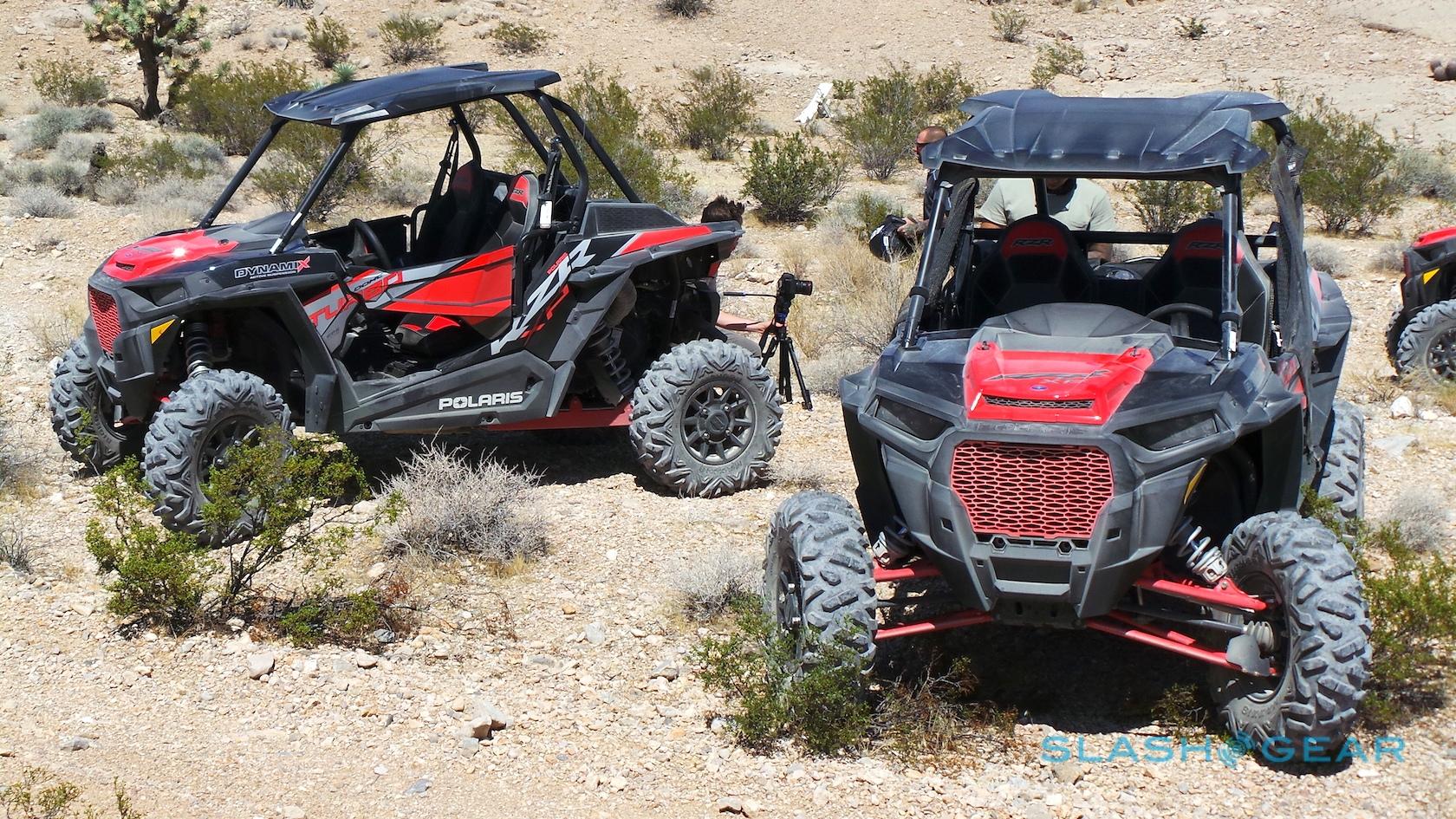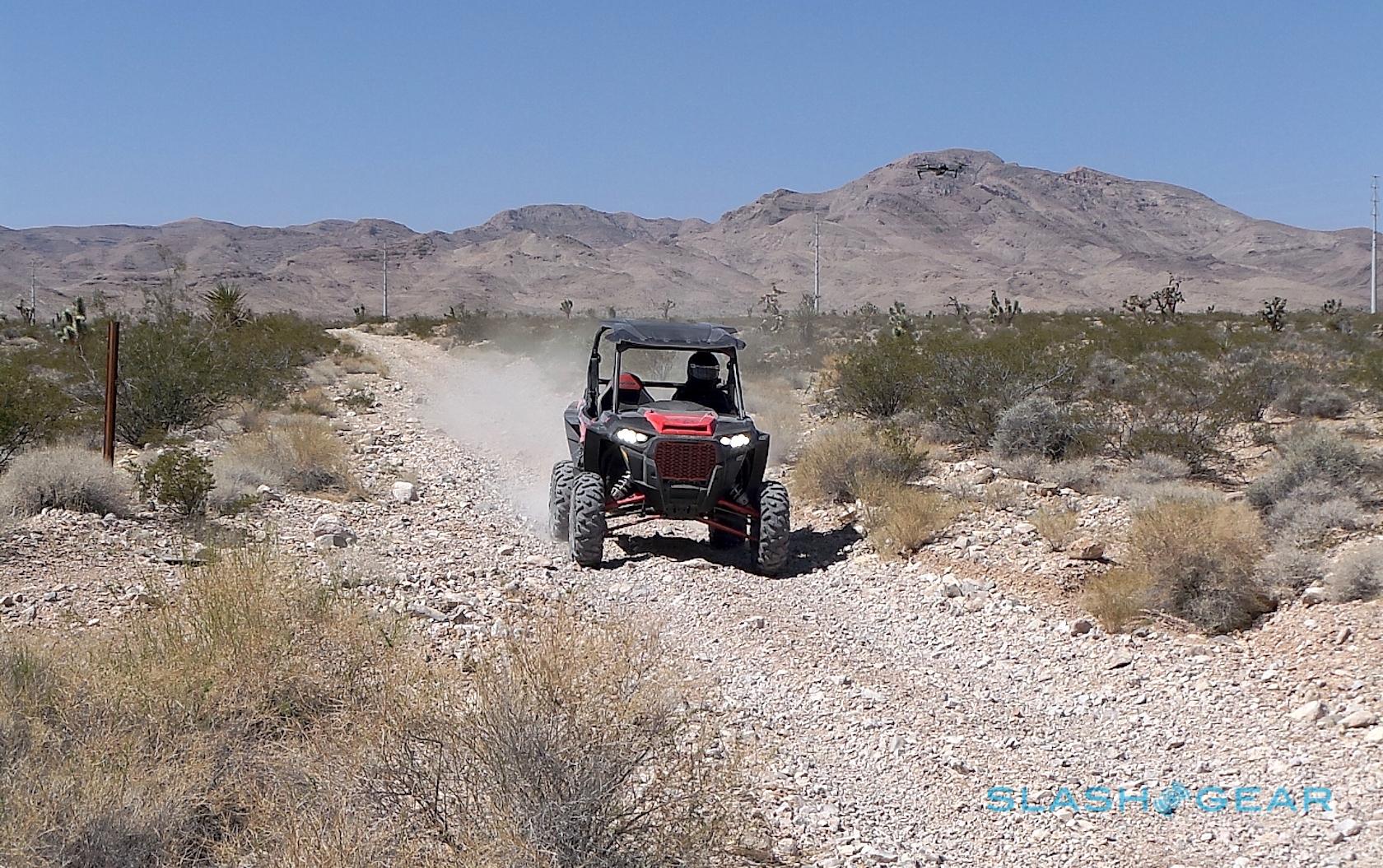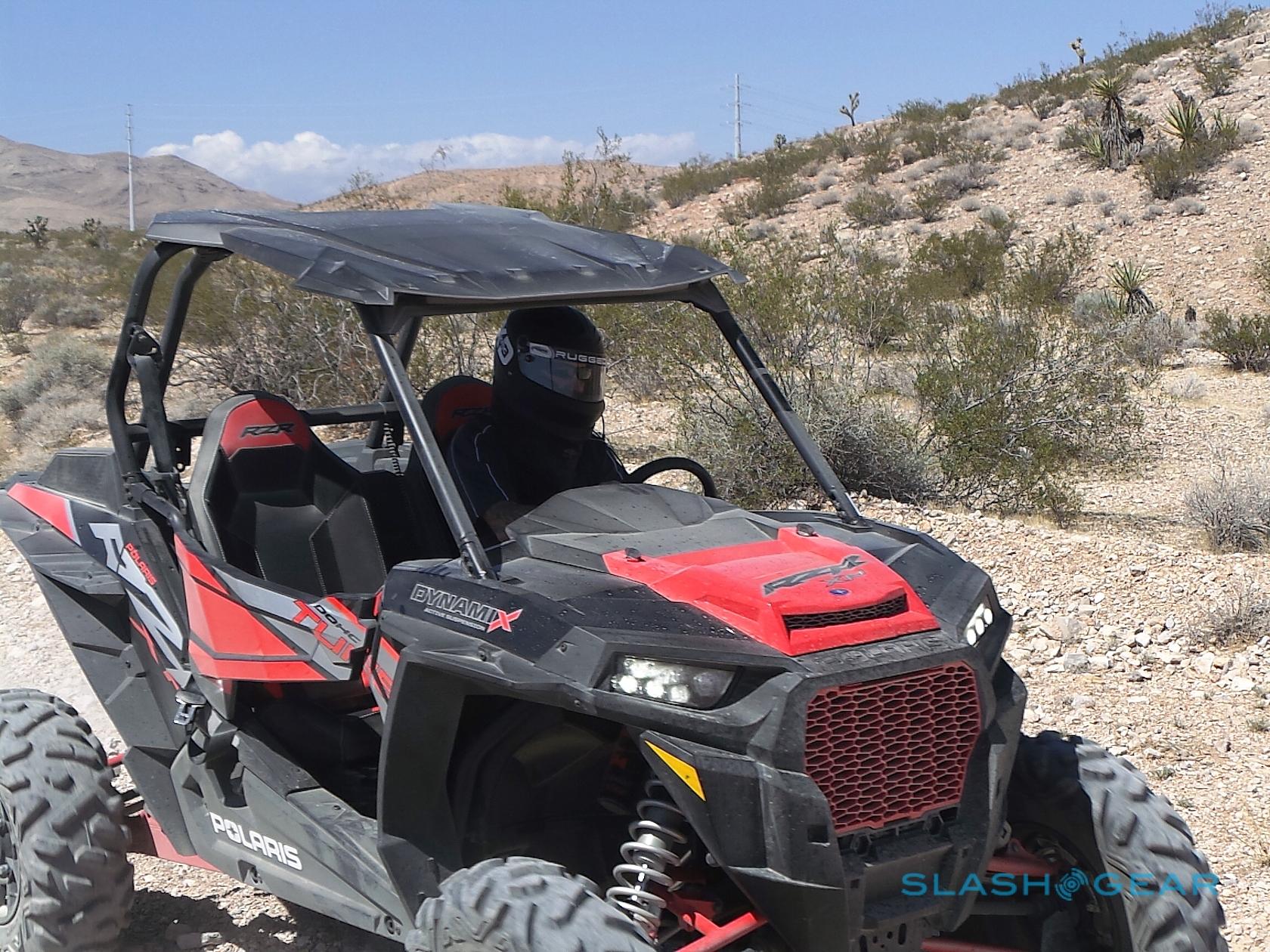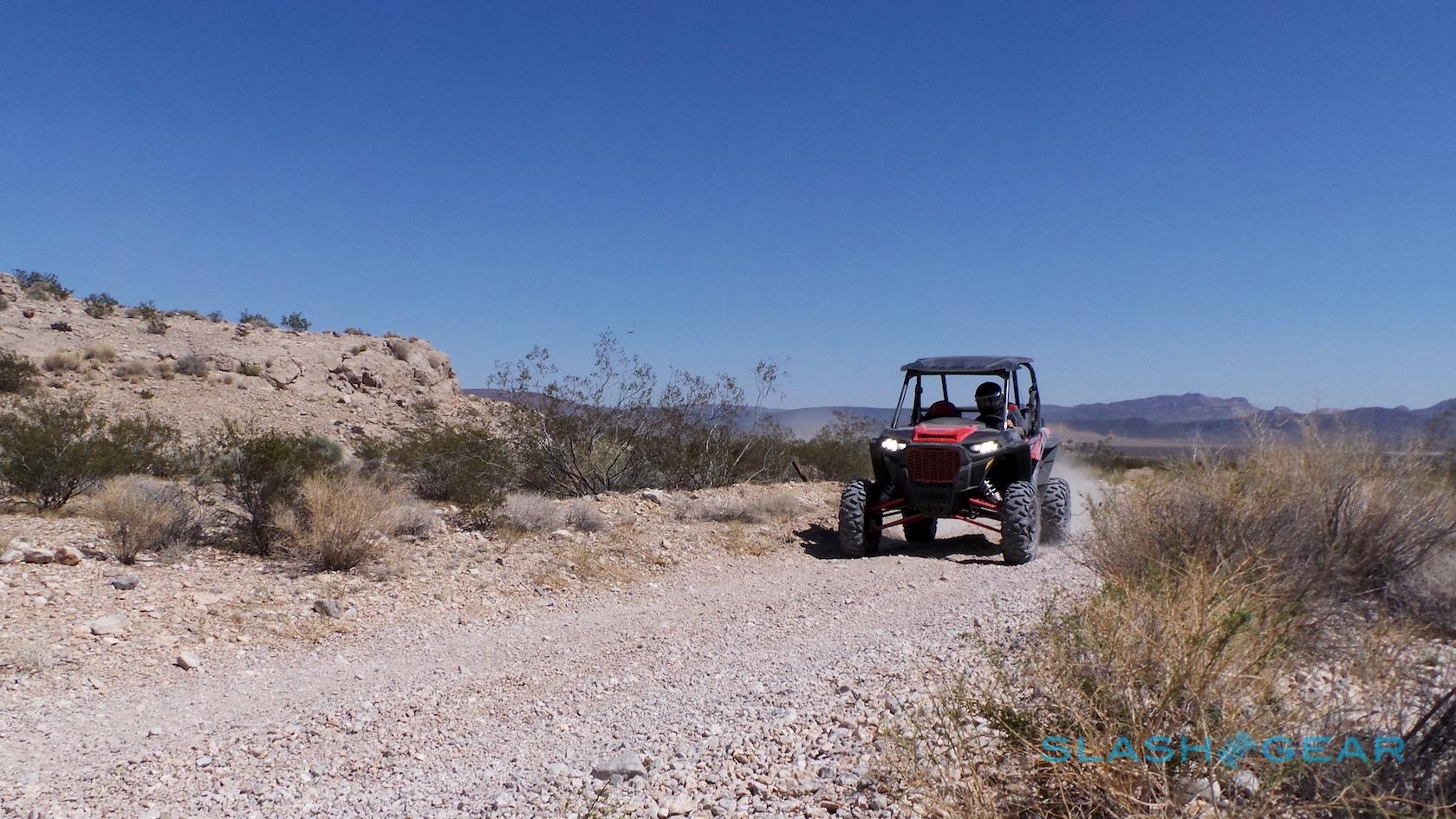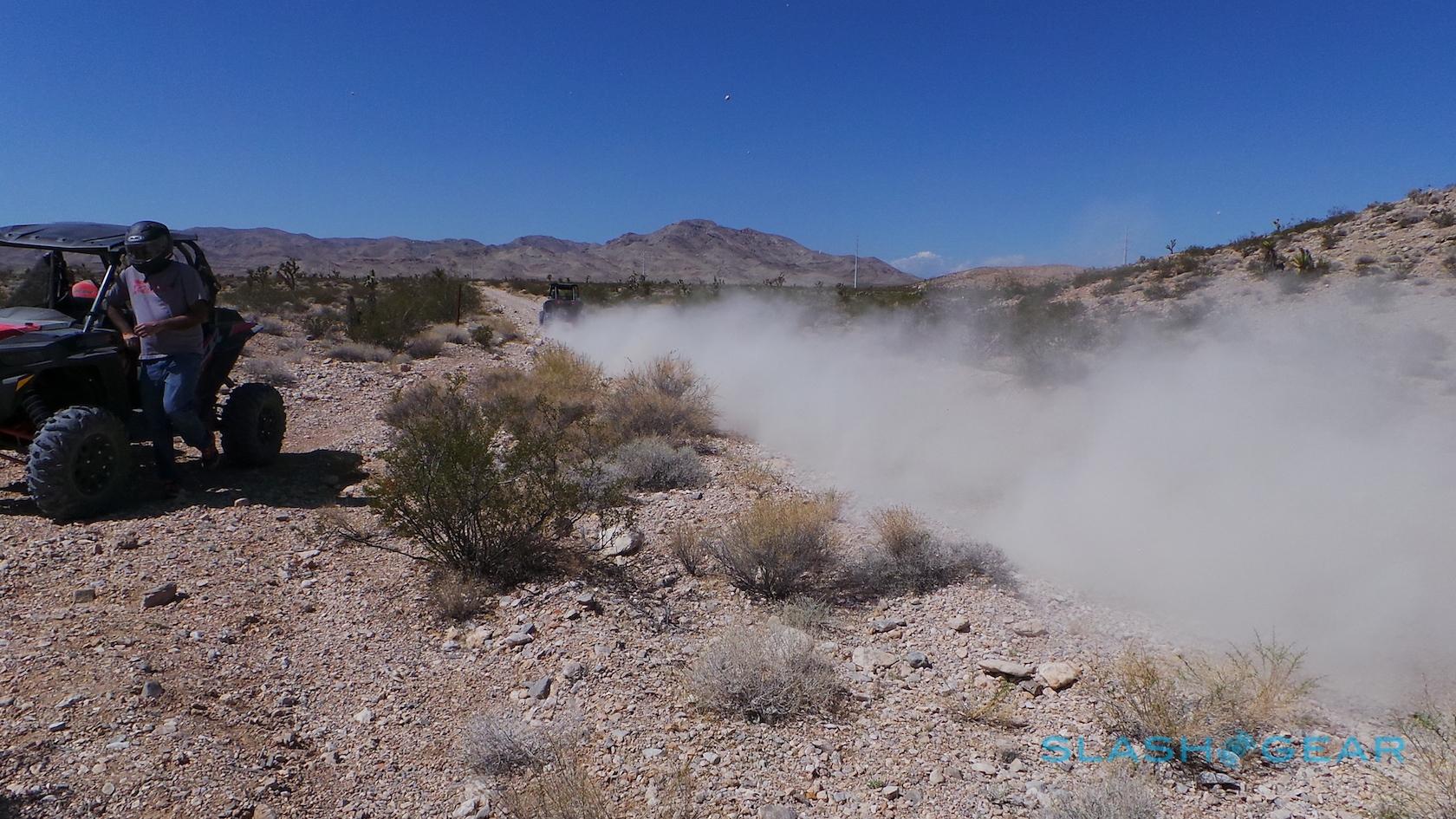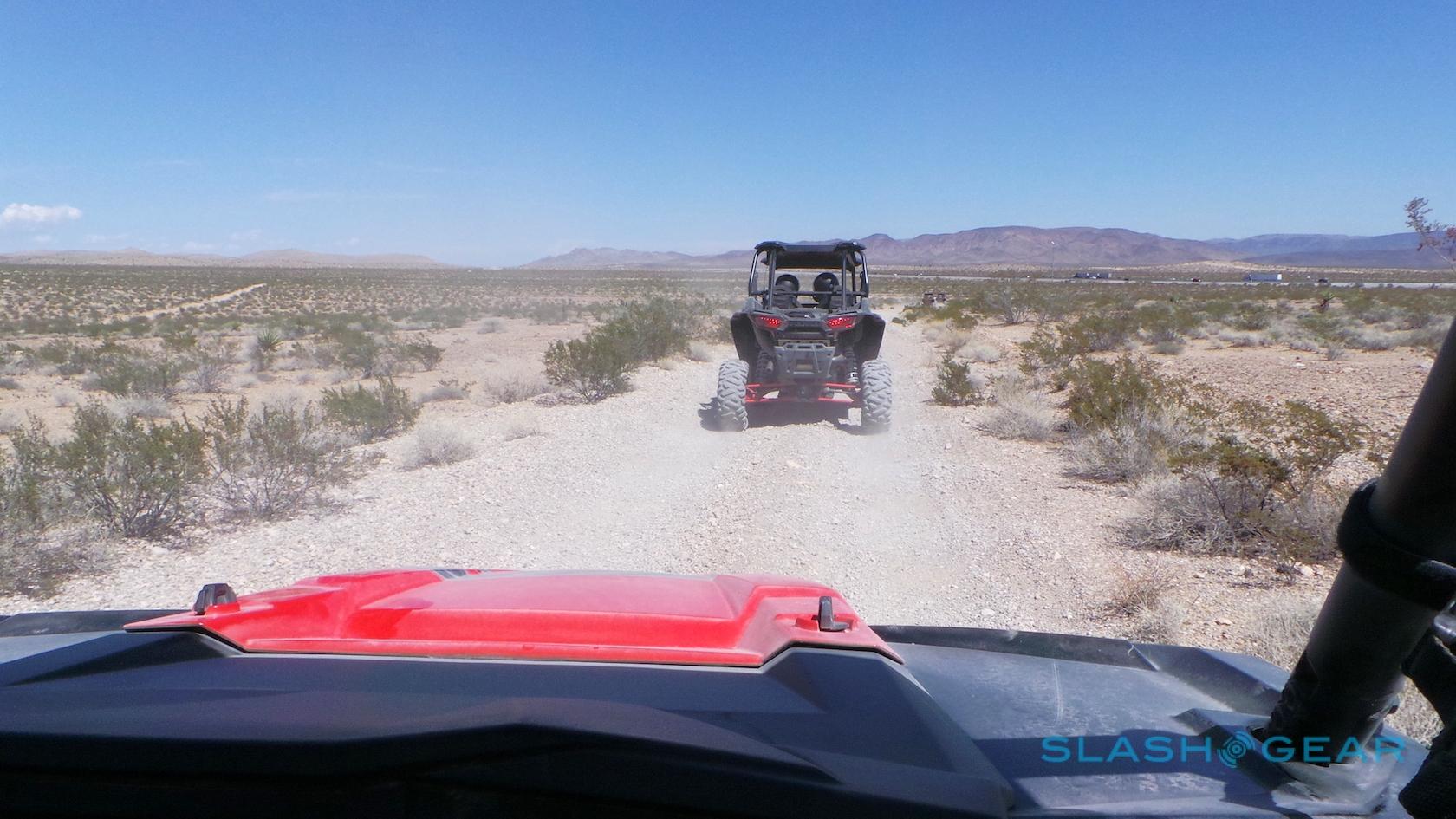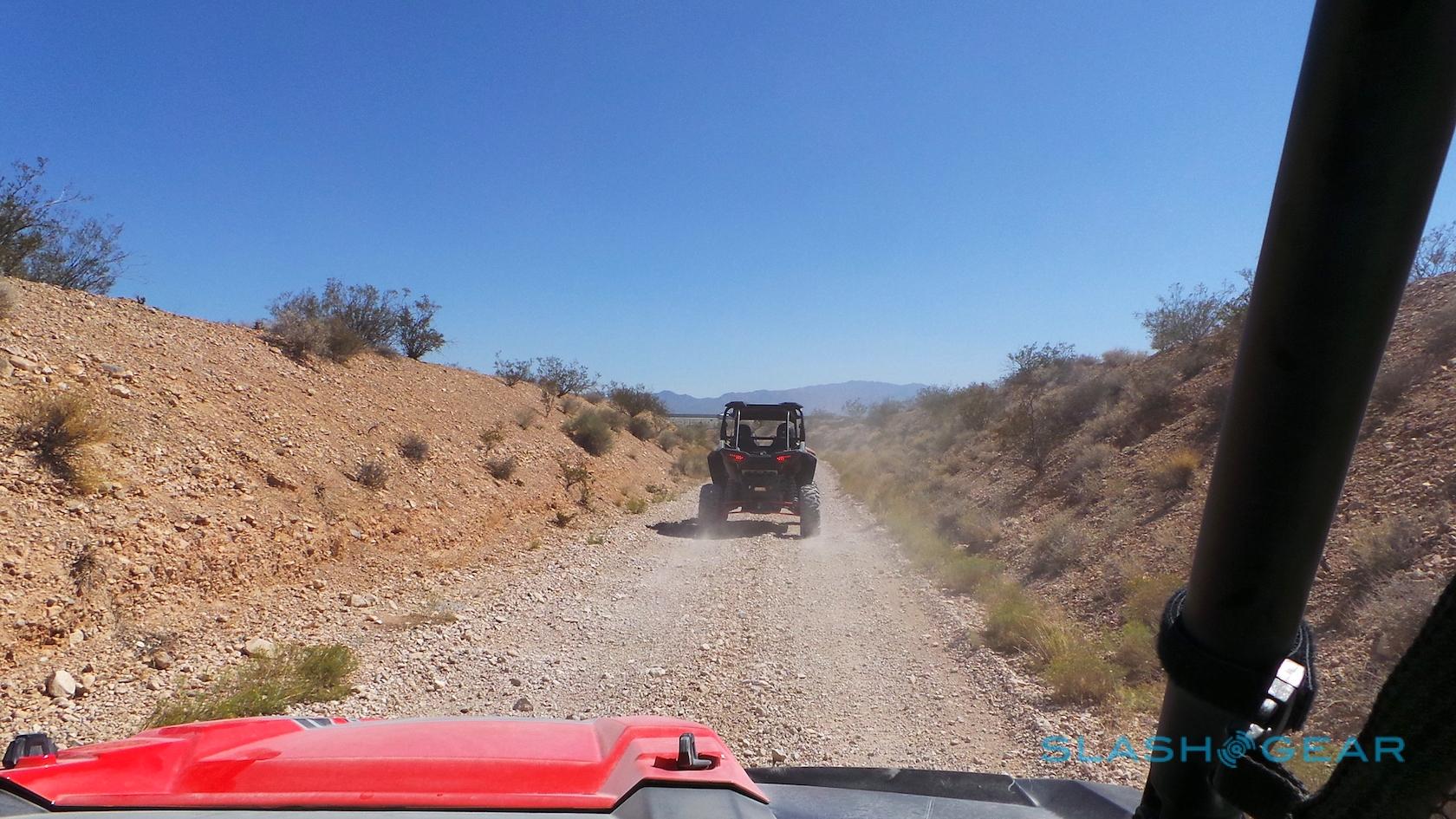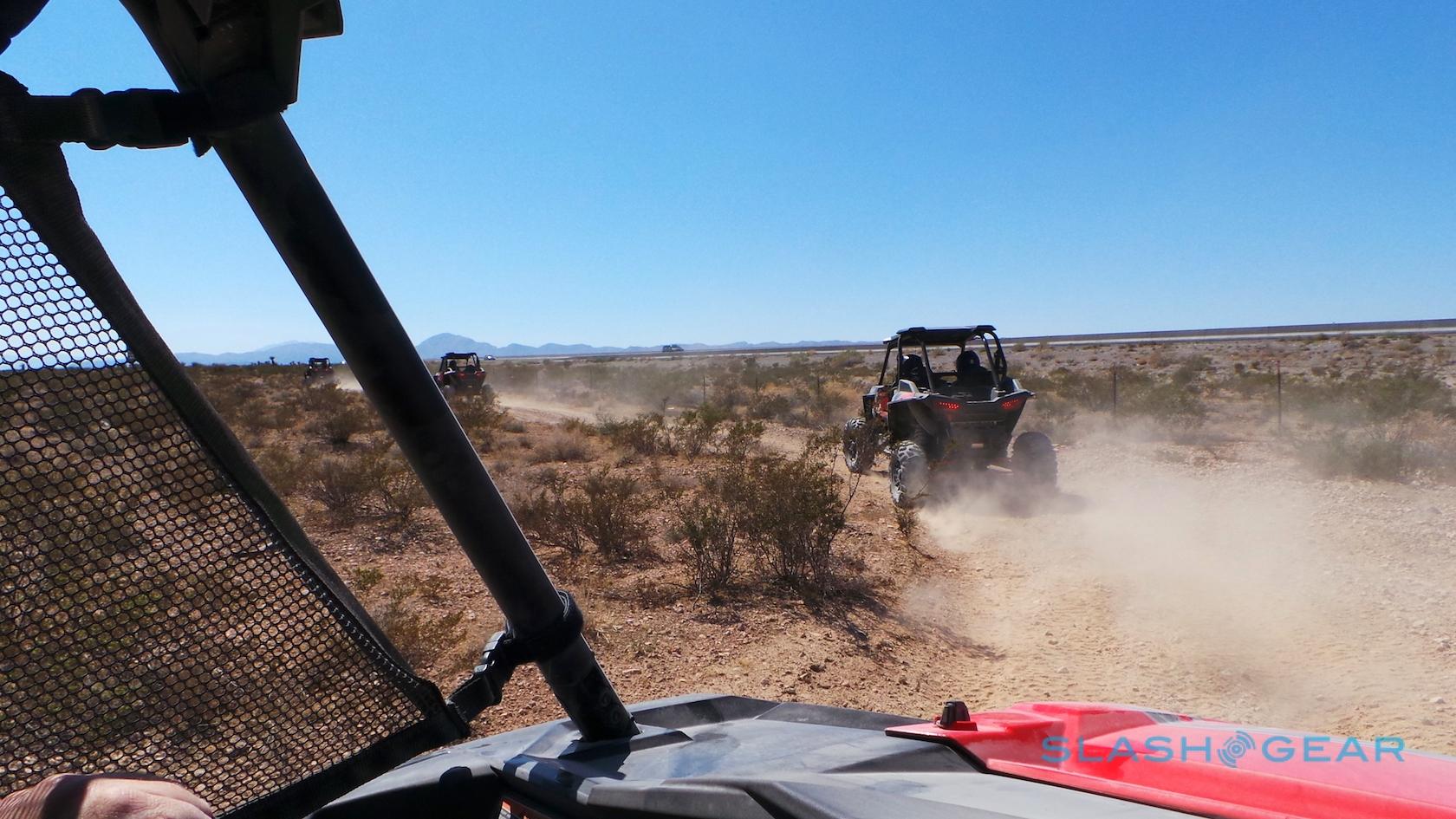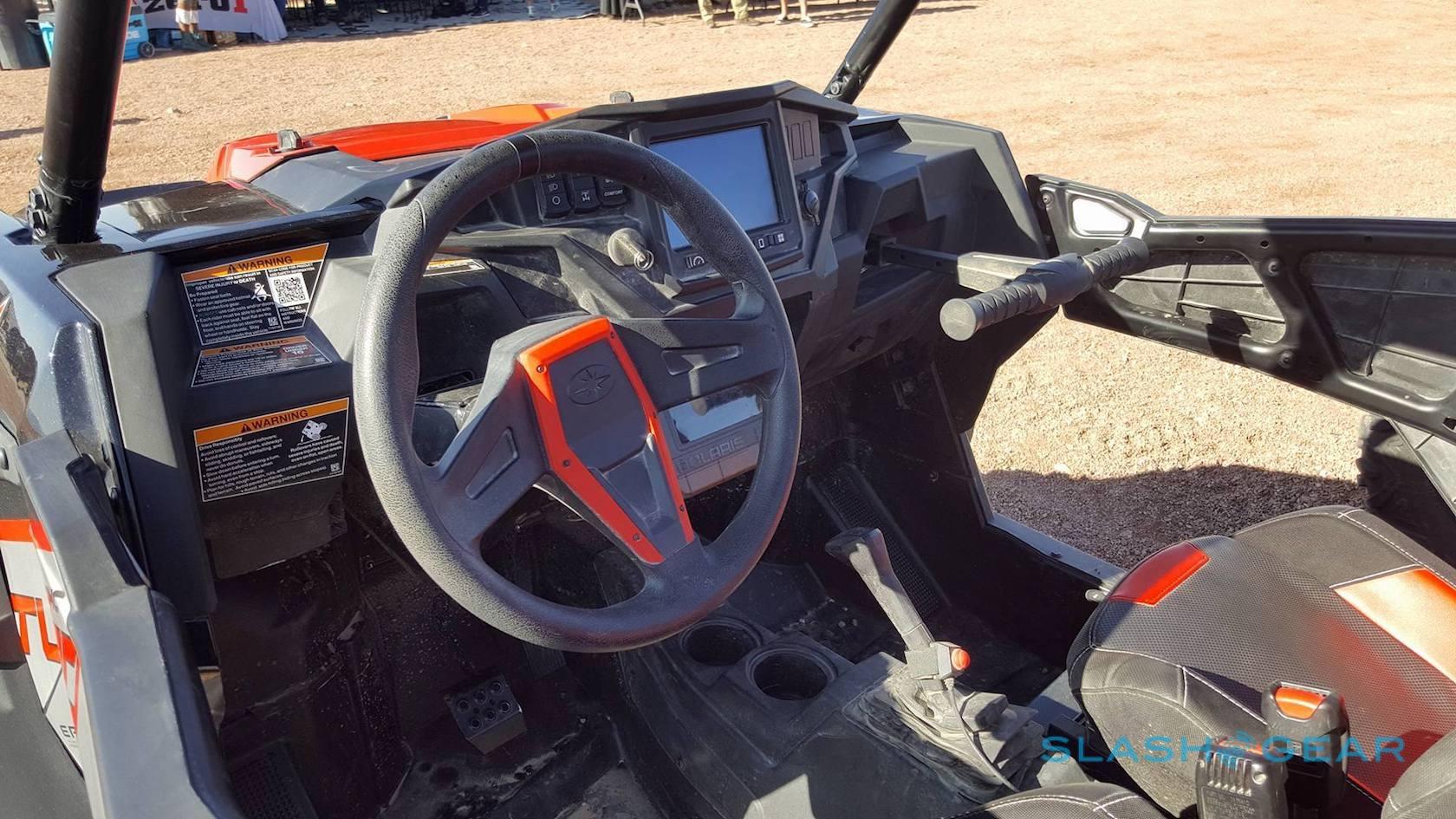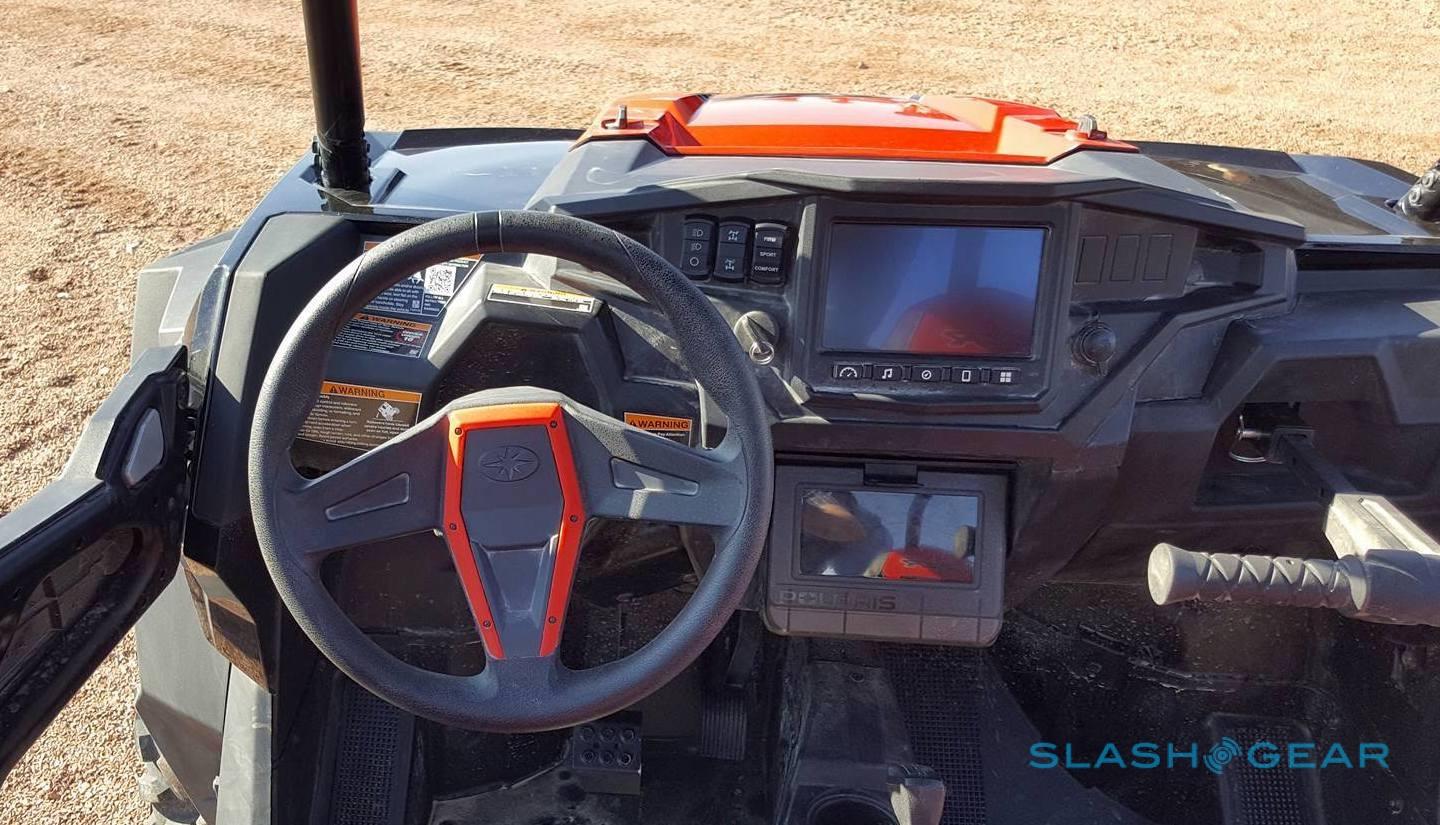2018 Polaris RZR Dynamix First Drive: Off-Road Witchcraft
For those unacquainted with the experience of offroading in a Polaris RZR, allow me a few brief words to familiarize you with the sensations. Dusty. Bouncy. Jarring. Thrilling. Windy. Scary. Rattling. And after you're done, Aching. For most weekend-warrior RZR drivers, the raw joy of conquering the backroads and trails of the western deserts of the USA have to be balanced by the raw muscles you'll have the day after. But that "offroader's hangover" might be a thing of the past, thanks to Polaris' new Dynamix suspension.
Don't get me wrong, the suspensions of RZRs past were modern wonders in their own right. Slickrock climbs, "gravel" roads where the rocks are the size of softballs, and desert trails of powdery sand were all one and the same, thanks to high clearances, long travels and stabilizer bars. But, as with most things in these wired days, the only thing missing was just the right algorithm.
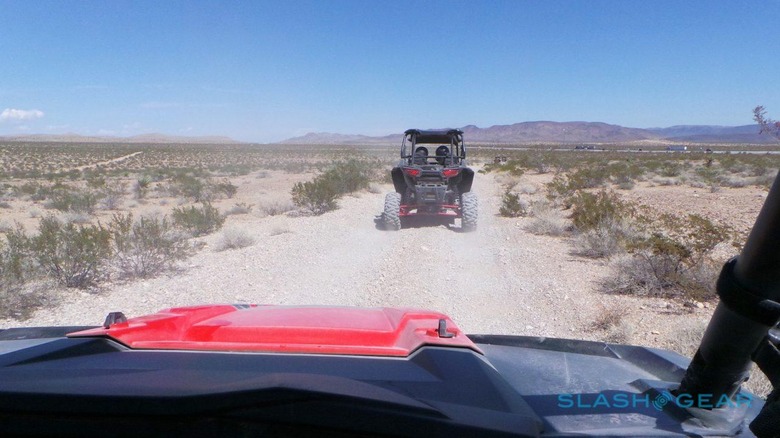
It's not missing anymore. What Polaris' engineers found was a computer controlled safety and comfort system that completely changes the offroad experience. To prove that point to me, they let me take a pair of their top-flight vehicles, one with Dynamix and one without, to the desert for a back-to-back comparison.
Having driven a RZR a couple of times in the past, I thought I knew what I was in for when I strapped into the 2018 RZR XP Turbo EPS Dynamix. But even "strapping in" was different. Instead of the usual four- or five-point restraint harness, I buckled up a standard shoulder belt. Then I looked around the cockpit. Gear lever on the floor? Check. Tiny fixed steering wheel? Check. Cupholders and dust resistant box for cell phone charging? Well, OK, check. Oversized center-mounted speedometer – wait a second...
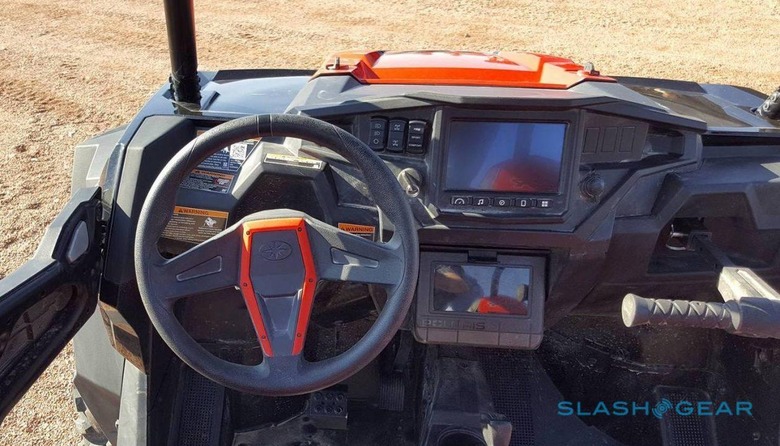
Instead of big round dial, my eyes beheld a tablet touchscreen, the heart of the Ride Command system, which fired up with a turn of the ignition key. Big rubber buttons beneath the screen led to the main functions: instruments, radio, GPS, Bluetooth connectivity and the system menu, including the Dynamix suspension system. I could spend an entire article on the GoPro camera integration or the GPS features that let you track your group around a trail run, but that's not what I came to the desert to do. I came to drive.
Helmet on, radio checked, ignition started, we set off. A rocker switch to the left of the screen let me choose between "comfort," "sport," and "firm." As the first leg of the trip was over some pretty tame sand trails, I chose "firm." This was close to the ride I remembered from previous drives. The RZR tells you what you just ran over in pretty clear terms, but you never feel like the obstacles really bothered it. They bothered you, however, as the bumps and shakes threw you around against your restraints. As the trail got rougher, I switched over to "comfort" and immediately felt the difference a little computer power makes.
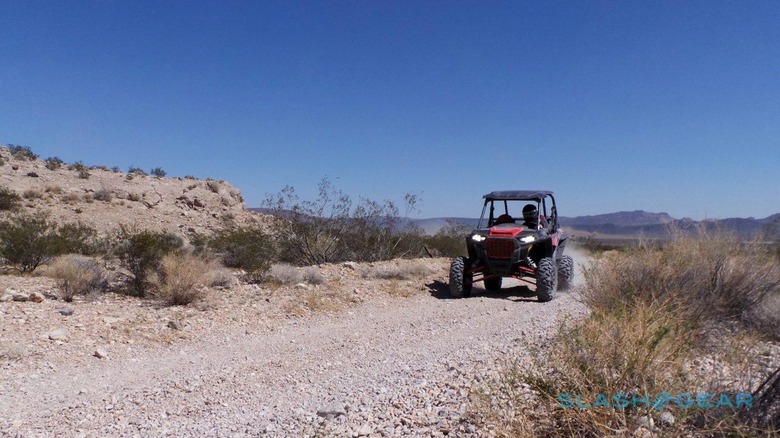
Suddenly, the RZR stopped punishing me for driving over rocks. It stopped chastising me for taking that dip just a bit too fast. Decide to take the right fork at the last minute, instead of the left? No worries, friend, you're not going to eat the exterior safety net or fear rolling over. It's all taken care of. Fascinated by the change, I quickly upgraded to "comfort" and I almost forgot I was on an unimproved – hell, barely marked – trail.
And therein lies the danger of this amazing safety system. It does not punish you for overconfidence. It does not inflict pain for wandering concentration. More than once, I looked at the bottom of a wash or gully coming too fast and thought, "oh, this is gonna suck." And it simply didn't. The RZR took it in stride and kept going straight. One time, distracted by some gorgeous Nevada scenery, I nearly missed the turn taken by the rest of our group. I mashed the brake (bad idea) and threw the wheel to the left (also not the greatest) and expected a fight to keep the vehicle upright and mostly off the Federally-protected desert tortoise habitat. Neither thing happened. A little skid, a little sway, and off to the left we went.
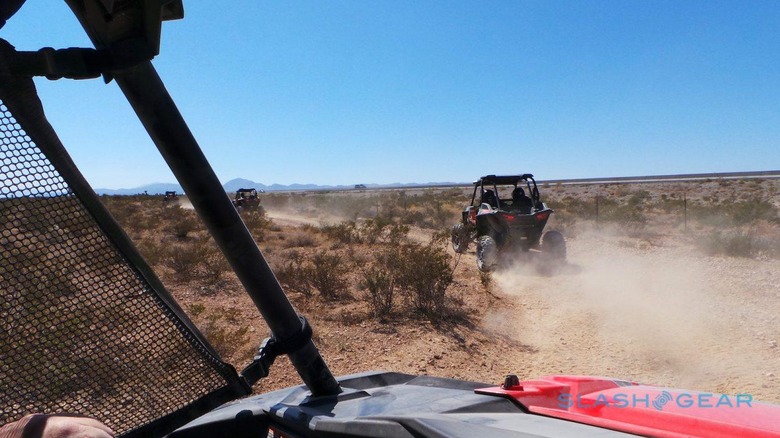
Weighing only 1,400 pounds, and powered by a 168-hp ProStar 4-Stroke DOHC Twin Cylinder Turbocharged engine, the Dynamix model gives you ample power to climb over or speed past just about anything the trail sets in front of you. Make no mistake, with all that power and so little weight, it will try to do both at the same time if you let it. Which is why Polaris specifically designed the Dynamix system to automatically raise the stiffness of the suspension to maximum when you do, inevitably, catch a little air. Rather than the bone-rattling shatter of bottoming out, RZR simply "tsk-tsks" you and carries on.
As impressed as I was with the machine when we stopped, I was looking forward to the switch to Polaris' old-school RZR XP 1000. No turbo, no computer, just me and 110 horses versus the same trail I had driven in the Dynamix model. Man and machine versus the wild, the way God intended. It hurt a lot more.
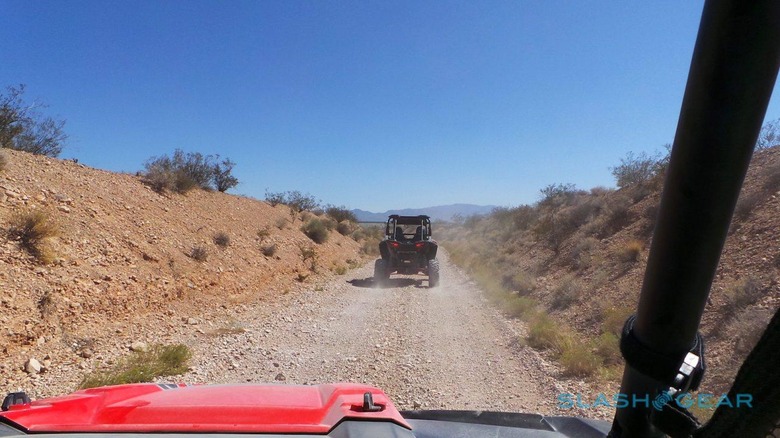
As I mentioned above, my first inkling that there was something different about the Dynamix model was the restraint system. Without it, you simply must have a 4- or 5-point restraint system to keep you in your seat. Fortunately, the XP 1000 has that. Next, top speeds on straights and entry speeds on turns are – by necessity – far slower without that active suspension assistance. I still had the basic confidence that the machine would do what I wanted it to do. The RZR wouldn't let you down, but it would happily share the pain of getting it done. Let me put it this way: a fellow rider got credit for 9,000 steps on her Fitbit... sitting in the passenger seat. It was the type of RZR ride I remembered, but as it turns out, the new suspension cured me of my nostalgia.
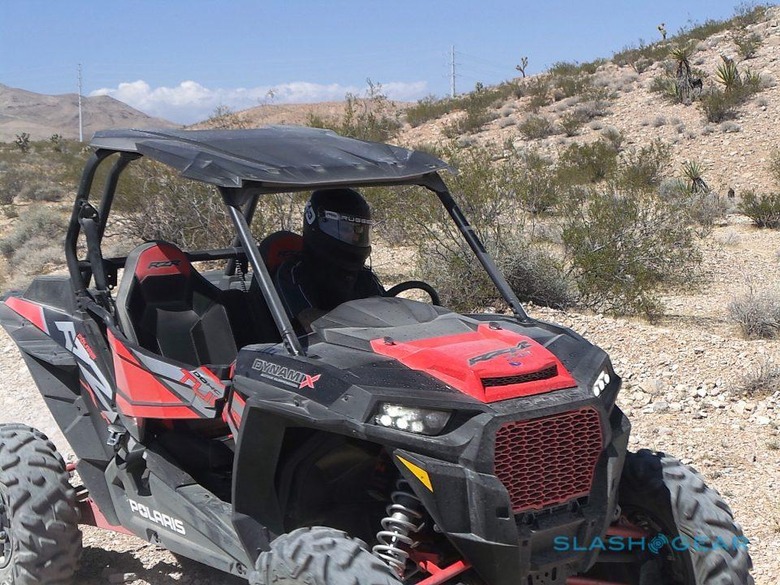
The computerized active suspension lets you relax and enjoy the experience so much more. I would not recommend learning to drive an off-road vehicle on a Dynamix-equipped RZR (see my comments on overconfidence and distraction above). I might think twice about it on a "technical" track where feedback from the suspension is arguably more important. But for a quick pleasure jaunt – or even a day-to-day drive to check the cattle and mend fences – the improved handling and speed of the Dynamix is hard to argue against.
Having said all of that, this extra functionality will cost you. The base price for a RZR XP 1000 is a "mere" $17,999. The RZR XP Turbo EPS Dynamix rings up at $25,999. What that extra eight grand will buy is a console full of toys (which I barely touched on), markedly improved handling, and the ability let the machine do some of the offroading for you – just enough to let you get away with some mistakes. If you want a pure offroad experience, save your cash. But if you want to get more enjoyment out of going offroad – and don't want your back muscles to remind you about it the next day – consider dishing out the extra.

